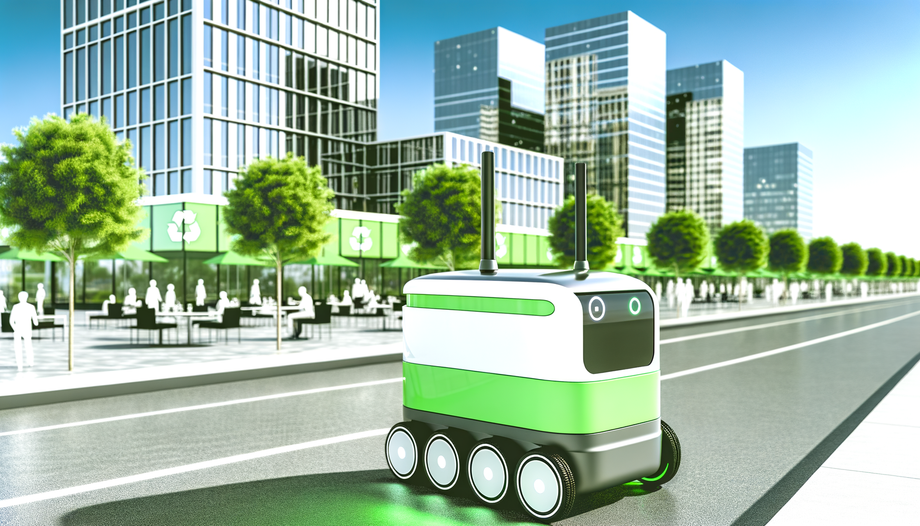In an era where environmental consciousness is no longer a choice but a necessity, companies are scrambling to find planet-friendly solutions to pressing logistical challenges. One solution that has been capturing widespread attention is the adoption of autonomous mobile robots (AMRs) for last-mile delivery. As environmental concerns mount and regulations tighten, businesses are increasingly investing in green delivery technologies, recognizing not just their compliance benefits, but also their potential for reducing costs in the long run.
The Environmental Imperative
With global governments and industry regulators pushing for greener practices, environmental legislation is driving a massive shift towards sustainable logistics solutions. The transportation sector, responsible for a significant share of global greenhouse gas emissions, finds itself under the spotlight, more so in densely populated urban centers where pollution levels are critically high. Last-mile delivery — the final step in the delivery process — presents a significant opportunity to curtail emissions, and innovative businesses are turning to autonomous mobile robots to answer the call.
The Role of Autonomous Mobile Robots
Autonomous Mobile Robots are compact, electric-powered machines designed to navigate through various environments to deliver goods efficiently.
These robots offer several environmental advantages:
- Emission Reduction: Powered by electricity, AMRs produce zero emissions during operations, promising a consequential decline in carbon footprint compared to traditional delivery vehicles.
- Energy Efficiency: AMRs consume significantly less energy, and their lightweight design allows for precise, on-demand deliveries without much exertion.
- Traffic and Noise Reduction: Their small size and operational scope contribute to less congestion and noise pollution, especially in bustling cityscapes.
Navigating Regulations and Incentives
In this evolving regulatory landscape, companies deploying autonomous robots for deliveries are capitalizing on various incentives offered by governments, such as tax breaks and reduced restrictions in urban delivery zones. These stimuli not only encourage the adoption of green technologies but also present a compelling business case, attracting investors who prioritize ecological responsibility.
The Investment Surge
As organizations eye sustainability as a strategic investment, spending on AMRs is skyrocketing:
- Market Growth: Recent market analyses project that the AMR market could reach unprecedented valuations, anticipating a compound annual growth rate fueled primarily by eco-conscious and efficiency-driven businesses.
- Venture Capital Interest: Startups in the automation and robotics field are attracting significant venture capital interest, as investors see AMRs as a key part of the sustainable delivery ecosystem.
- Corporate Engagement: Major logistics and retail companies are leading trials with autonomous robots, indicating a shift towards widespread, mainstream adoption.
Challenges and Opportunities
While the benefits of adopting AMRs in last-mile delivery are clear, the transition is not without its challenges:
- Infrastructure Requirements: The implementation demands robust infrastructure to support robot charging and navigation.
- Public and Regulatory Acceptance: Concerns such as public safety, technology reliability, and job displacement require strategic stakeholder engagement to ensure a harmonious transition.
- Technological Innovations: Continual innovation is needed to increase the capacity, reach, and cost-effectiveness of AMRs.
Looking Forward: The Future of Last-Mile Delivery
Despite the hurdles, the future of autonomous mobile robots in last-mile delivery looks promising. As corporations and municipalities collaborate to refine regulatory frameworks and adapt infrastructure, AMRs are well-positioned to spearhead the movement towards resilient and sustainable urban logistics.
Conclusion
Amid the burgeoning need for eco-friendly solutions, autonomous mobile robots are not simply an alternative; they are essential protagonists in the quest to develop a sustainable future. By mitigating environmental impact and complying with green regulations, AMRs are actively reshaping the last-mile delivery landscape, proving that environmental responsibility and profitability can indeed go hand in hand.
The growing enthusiasm towards investing in these innovations isn't just about adapting to regulations — it's about configuring a future where sustainable delivery solutions become the new standard. Companies that embrace these changes early will not only meet present-day environmental mandates but will also position themselves as pioneers in the future of green technology.
Explore Comprehensive Market Analysis of Autonomous Mobile Robot for Last-mile Delivery Market
SOURCE -- @360iResearch

